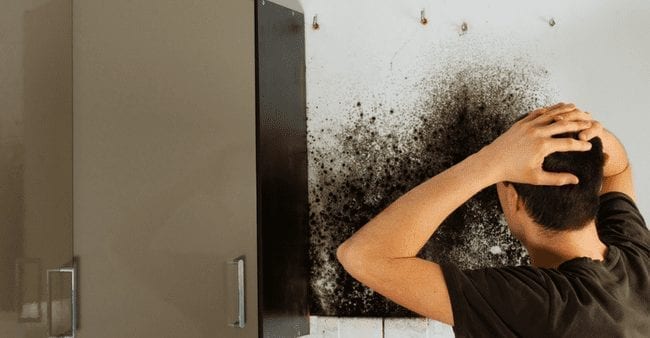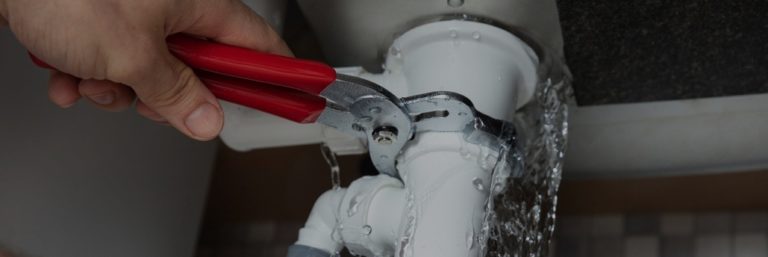6 Ways to Find Concealed Water Leakages in Your House
6 Ways to Find Concealed Water Leakages in Your House
Blog Article
We've stumbled upon the article about Hacks to detect leaks below on the net and decided it made perfect sense to talk about it with you on this site.

Early detection of leaking water lines can alleviate a prospective calamity. In addition to conserving you cash, it will reduce the aggravation and disappointment. The minute you discover a leakage, calling your plumber for repair services is the very best solution. Some little water leaks might not be visible. If you can not identify it with your naked eyes, below are some hacks that assist.
1. Take A Look At the Water Meter
Every residence has a water meter. Checking it is a surefire way that helps you uncover leakages. For beginners, turn off all the water resources. Make certain no person will certainly flush, utilize the faucet, shower, run the washing equipment or dishwashing machine. From there, most likely to the meter and also watch if it will certainly transform. Since no person is utilizing it, there need to be no movements. If it moves, that indicates a fast-moving leakage. If you detect no modifications, wait a hr or two and inspect back once again. This indicates you might have a sluggish leakage that could also be below ground.
2. Check Water Intake
Evaluate your water costs as well as track your water consumption. As the one paying it, you must notice if there are any discrepancies. If you detect sudden changes, in spite of your intake coinciding, it suggests that you have leaks in your plumbing system. Bear in mind, your water costs need to fall under the same array on a monthly basis. An unexpected spike in your expense suggests a fast-moving leakage.
A consistent rise every month, even with the very same practices, shows you have a slow-moving leak that's additionally slowly escalating. Call a plumber to extensively examine your property, specifically if you really feel a warm area on your floor with piping beneath.
3. Do a Food Coloring Test
When it comes to water intake, 30% comes from commodes. If the color in some way infiltrates your dish during that time without flushing, there's a leak in between the tank as well as bowl.
4. Asses Exterior Lines
Don't neglect to examine your exterior water lines as well. Test spigots by affixing a garden tube. Should water seep out of the connection, you have a loose rubber gasket. Replace this as well as make sure all links are tight. If you've got a sprinkler system, it will aid get it skillfully checked out and also kept each year. One little leak can waste lots of water and spike your water costs.
5. Assess the scenario and evaluate
Homeowners must make it a habit to check under the sink counters as well as also inside cupboards for any kind of bad odor or mold development. These 2 warnings indicate a leakage so timely interest is needed. Doing routine assessments, also bi-annually, can conserve you from a significant trouble.
Inspect for discolorations as well as deteriorating as a lot of pipes as well as home appliances have a life span. If you believe leaking water lines in your plumbing system, don't wait for it to escalate.
Early discovery of dripping water lines can alleviate a possible disaster. Some tiny water leaks may not be visible. Examining it is a proven method that assists you uncover leaks. One small leak can lose heaps of water and surge your water bill.
If you presume dripping water lines in your plumbing system, don't wait for it to escalate.
WARNING SIGNS OF WATER LEAKAGE BEHIND THE WALL
PERSISTENT MUSTY ODORS
As water slowly drips from a leaky pipe inside the wall, flooring and sheetrock stay damp and develop an odor similar to wet cardboard. It generates a musty smell that can help you find hidden leaks.
MOLD IN UNUSUAL AREAS
Mold usually grows in wet areas like kitchens, baths and laundry rooms. If you spot the stuff on walls or baseboards in other rooms of the house, it’s a good indicator of undetected water leaks.
STAINS THAT GROW
When mold thrives around a leaky pipe, it sometimes takes hold on the inside surface of the affected wall. A growing stain on otherwise clean sheetrock is often your sign of a hidden plumbing problem.
PEELING OR BUBBLING WALLPAPER / PAINT
This clue is easy to miss in rooms that don’t get much use. When you see wallpaper separating along seams or paint bubbling or flaking off the wall, blame sheetrock that stays wet because of an undetected leak.
BUCKLED CEILINGS AND STAINED FLOORS
If ceilings or floors in bathrooms, kitchens or laundry areas develop structural problems, don’t rule out constant damp inside the walls. Wet sheetrock can affect adjacent framing, flooring and ceilings.
https://www.servicemasterbyzaba.com/blog/how-to-detect-water-leakage-in-walls/

As a passionate person who reads about Leaking water lines, I was thinking sharing that piece of content was smart. Do you know someone else who is fascinated by the subject? Why not promote it. We take joy in reading our article about Hacks to detect leaks.
Report this page